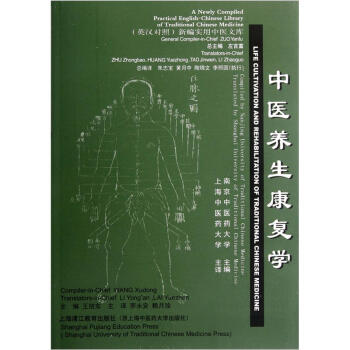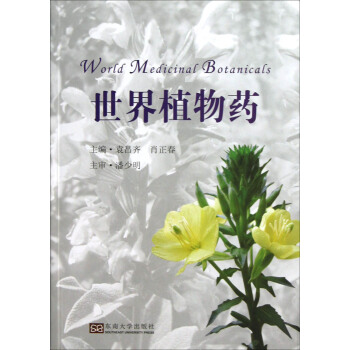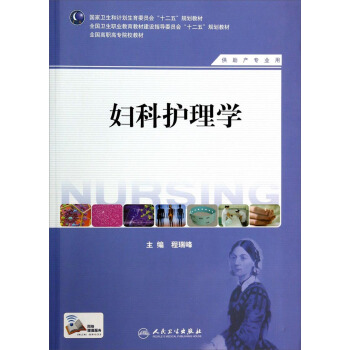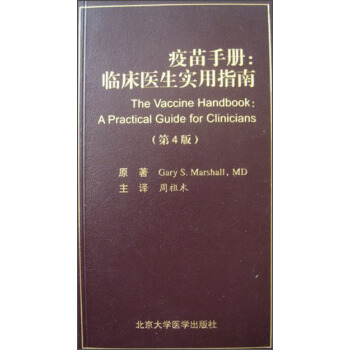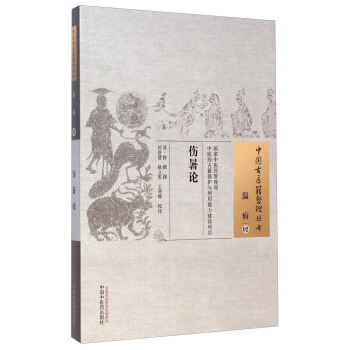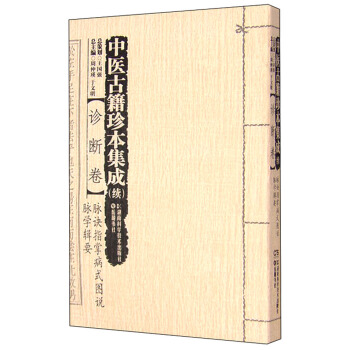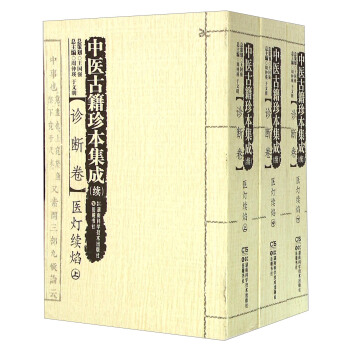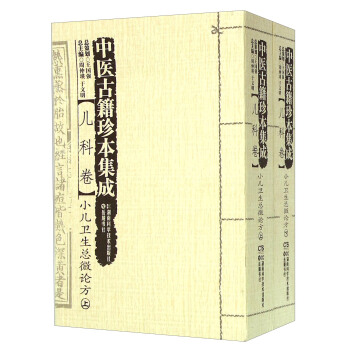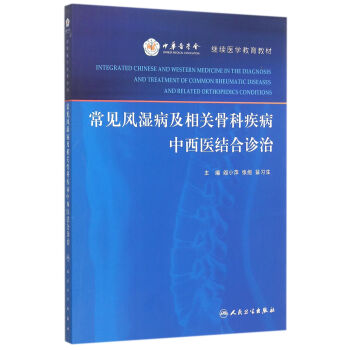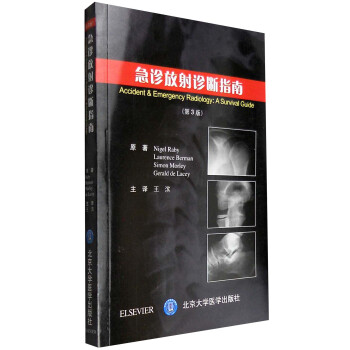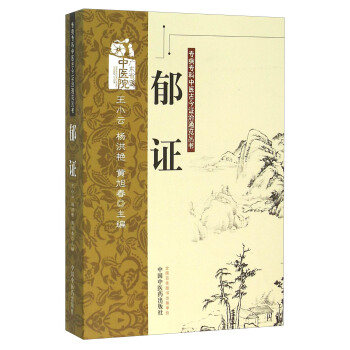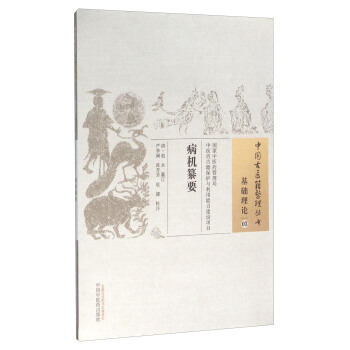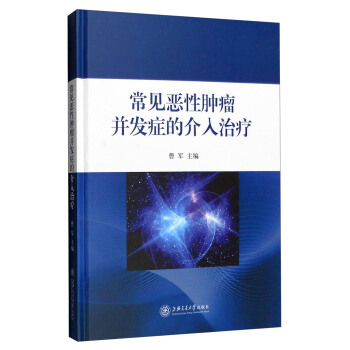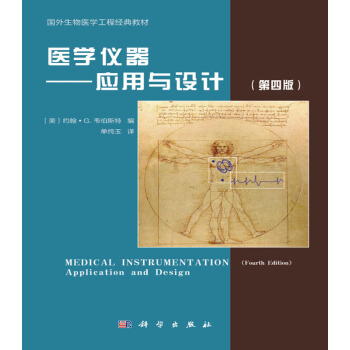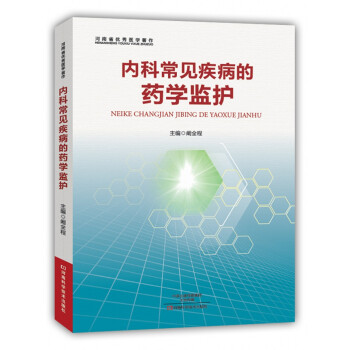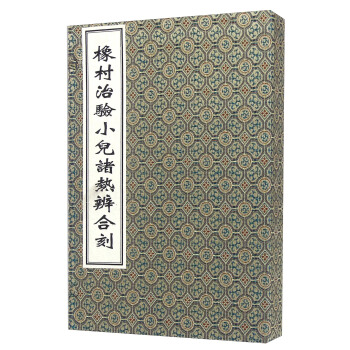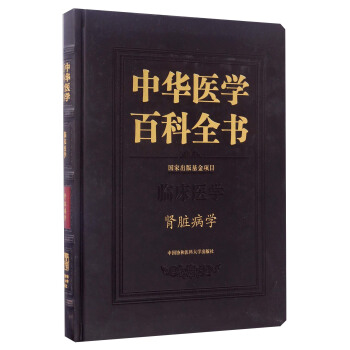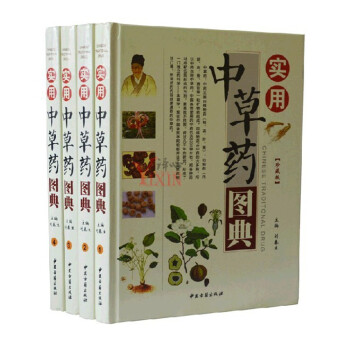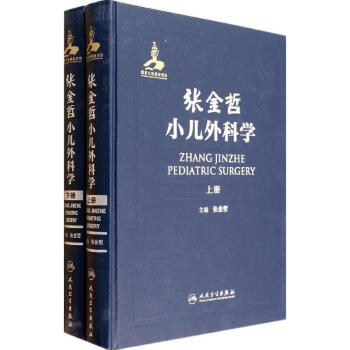

具體描述
內容簡介
Professor Xie Zhufan is a leading specialist in the area ofintegrating Chinese and Western medicine, Taking heed of theculturl differenices of the East and the West, he has writtenPractical Traditiona/ Chinese Medicine to meet the needs ofWestern doctors who do not have the knowledge of Chinese butexplaining profound concepts in simple terms. It covers basictheories and major therapeutic measures, i.e., herbalmedication and acupuncture. The diseases discussed aremainly those, for which Western medical treatment is eitherhardly effective or likely to produce serious side effects whileChinese medicine may gain better results. The therapeuticmethods have been carefully selected; they are quite practicaland easy to apply, indicating the characteristic features oftraditional Chinese medicine: simplicity and effectiveness. Thebook not only includes the basic knowledge of traditionalChinese medicine, but also the fruits of Pro~essor Xie's ownexperience and understanding.作者簡介
謝竹藩,北京大學第一臨床學院教授,北京大學中西醫結閤研究所名譽所長。四十多年來,他一直緻力於中西醫結閤臨床及實驗研究,在傳統中醫學和中西醫結閤醫學上有深厚造詣和突齣成就。他多次應邀在國外醫學院講學,並多次齣任世界衛生組織傳統醫學顧問,曾參與世界衛生組織“標準針炙命名法”的定稿工作。同時,他還齣版瞭大量的研究專著,如1980年的《漢英常用中醫藥詞匯》和1984年的《中醫藥詞典》二書,在國內外産生瞭較大影響。他因在《漢英醫學大詞典》(1987年)一書的編篡中有突齣貢獻,而獲得衛生部嘉奬。此外,還與人閤作編著齣版瞭1994年版的《漢英中醫藥分類詞典》。2000年,他受命於國傢中醫藥管理局,進行“中醫藥名詞術語英譯標準化”的研究。本詞典就是在該項研究的基礎上重新編著而成。內頁插圖
目錄
PREFACEFOREWORD
PART ONE
THE FUNDAMENTALS AND PRINCIPLES OF TRADITIONAL
CHINESE MEDICINE
CHAPTER 1
PFILLOSOPHICAL BASIS OF TRADITIONAL CHINESE MEDICINE-Theories ofEssential Qi, Yin-Yang and the Five Elements
CHAPTER 2
THE FUNDAMENTAL SUBSTANCES FOR LIFE ACTIVITIES-Vital Essence, Q, Fluids, and Blood
CHAPTER 3
STRUCTURE AND FUNCTIONS OF THE HUMAN BODY-Manifestations ofthe Zang-Fu Organs
CHAPTER 4
CAUSES OF DISEASE AND PATHOGENIC FACTORS
CHAPTER 5
METHODS OF EXAMINATION
CHAPTER 6
DIFFERENTIATION OF SYNDROMES
CHAPTER 7
PRINCIPLES AND METHODS OF TREATMENT
PART TWO
TRADITIONAL CHINESE DRUGS
CHAPTER 8
FUNDAMENTAL KNOWLEDGE OF CHINESE DRUGS
CHAPTER 9
MATERIA MEDICA IN COMMON USE
CHAPTER 10
HERBAL FORMULAS
CHAPTER 11
COMMONLY USED PATENT MEDICINES
PART THREE
ACUPUNCTURE AND MOXIBUSTION
CHAPTER 12
THE MERIDIAN SYSTEM
CHAPTER 13
ACUPOINTS
CHAPTER 14
TECHNIQUES OF ACUPUNCTURE AND MOXIBUSTION
CHAPTER 15
BASIC PRINCIPLES OF ACUPUNCTURE TREATMENT
PART FOUR
COMMON DISEASES
CHAPTER 16
RESPIRATORY DISEASES
CHAPTER 17
CARDIOVASCULAR DISEASES
CHAPTER 18
DIGESTIVE DISEASES
CHAPTER 19
BLOOD DISORDERS
CHAPTER 20
RENAL DISEASES
CHAPTER 21
ENDOCRINE AND METABOLIC DISORDERS
CHAPTER 22
GYNECOLOGICAL DISEASES
CHAPTER 23
SKIN DISEASES
CHAPTER 24
NEUROLOGICAL AND PSYCHIATRIC DISORDERS
CHAPTER 25
LOCOMOTIVE DISORDERS
APPENDIX 1
APPENDIX 2
INDICES
GENERAL INDEX
INDEX OF PINYIN NAMES OF MEDICINAL SUBSTANCES, HERBAL
FORMULAS, PATENT MEDICINES AND ACUPOINTS
INDEX OF LATIN NAMES OF MEDICINAL SUBSTANCES
ACKNOWLEDGEMENT
精彩書摘
The Lungs dominate qi in two aspects. One aspect is that the Lungs take charge ofrespiration; breathing in fresh qi (air containing oxygen) and breathing out stale qi (aircontaining carbon dioxide). It is in the Lungs that the gas exchange takes place. Therefore,the movements of q/in the Lungs include ascending, descending, coming in and going out.Through these movements of qi in different directions, the Lungs regulate the movementsof qi in general. In the process of respiration, the air passages should be kept clean andunobstructed. If any pathogenic factor impedes the smooth flow of air during respiration,there will be coughing and dyspnea due to "upward perversion of Lung q" It should berespiratory disorders, such as coughing and dyspnea in emphysema and chronic asthma,are often attributed to impaired function ofboth the Lungs and the Kidneys.The other aspect is the role ofthe Lungs in the formation ofq, especially pectoral q.Pectoral qi is formed by combining essential qi derived from food and fresh air (oxygen)inhaled by the Lungs. The qi thus formed in the Lungs is collected in the chest. It providesenergy for respiration and the voice on the one hand, and assists Heart qi to promote bloodcirculation on the other. With normal functioning of the Lungs in dominating q, abundantqi can be supplied to all the zangfu organs, Impairment of this function usually results in insufficient formation of pectoral qi and disordered movements of q/in general, manifestedby shortness ofbreath, feeble voice, lassitude and lack of energy.
2. Regulating the water passages
This is one of the unique points in traditional Chinese medicine. The Lungs arebelieved to take part in the regulation of water metabolism. They disseminate fluid to thebody's surface, and disperse a part of the body's fluids through the pores as sweat. They also constantly send fluid downwards to the Kidneys for the excretion of urine. The latter function is known as "regulating the water passages." Ifthis function is impaired, fluid willbe retained, transformed into phlegm in the Lungs, or accumulated in the tissues, resultingin edema, especially edema ofthe upper portion ofthe body.
The Lungs' function in regulating the water passages is a conclusion drawn fromclinical observations. Edema manifested in the upper portion of the body (e.g., acutenephritis) is often associated with respiratory symptoms and can be relieved with herbalmedicines commonly used for treating respiratory diseases (such as Herba Ephedrae).
......
前言/序言
用戶評價
評分我必須坦誠地說,在接觸《實用中醫學(英文版)》之前,我對中醫的認知幾乎為零,甚至帶有一些固有的偏見。總覺得它不夠“科學”,太玄乎,難以捉摸。然而,這本書徹底改變瞭我的看法,它就像一位循循善誘的老師,用一種完全不同的視角,讓我重新認識瞭中醫。這本書的偉大之處在於,它並沒有試圖用艱深的術語來“嚇退”讀者,而是用一種非常平實、邏輯清晰的方式,層層遞進地展現瞭中醫的博大精深。 最令我摺服的是,書中對中醫“辨證論治”理念的解讀。我一直以為中醫就是根據癥狀給藥,殊不知“辨證”纔是關鍵。這本書詳細解釋瞭如何通過“望、聞、問、切”這四診來收集信息,然後如何根據“陰陽、虛實、寒熱、錶裏”等八綱辨證,來分析病機的本質。這種嚴謹的推理過程,讓我看到瞭中醫的科學性和邏輯性,它並非是隨意的臆測,而是基於對人體深刻的理解。 而且,書中對髒腑理論的講解也讓我耳目一新。我之前以為“肝”“心”“脾”“肺”“腎”僅僅是西醫解剖學上的器官,而這本書卻告訴我,中醫的“髒腑”更多的是一種功能概念,它們之間有著復雜的聯係,並且與情誌、飲食、起居等生活習慣息息相關。通過生動的比喻和大量的臨床案例,我能夠理解這些“髒腑”是如何影響我們的身心健康,以及如何通過調理它們來達到治病養生的目的。 這本書還非常注重中醫的“治未病”思想。它不僅僅教你如何治病,更重要的是教你如何通過調整生活方式、飲食起居以及運用一些簡單的中醫養生方法,來保持身體的健康,預防疾病的發生。這一點對於我這種越來越關注健康生活方式的人來說,非常有價值。它讓我明白,中醫不僅僅是一種治療疾病的手段,更是一種積極健康的生活哲學。 總而言之,《實用中醫學(英文版)》是一本真正意義上的“實用”中醫教材。它不僅僅是一本知識的集閤,更是一種思維方式的啓迪。它用一種非常接地氣的方式,將中醫這門古老而又充滿智慧的學問,呈現在世界麵前。我由衷地感謝這本書,它讓我對中醫有瞭全新的認識,也激發瞭我進一步學習和探索中醫的熱情。我強烈推薦給所有對中醫感興趣的朋友,相信你們也會和我一樣,在這本書中找到驚喜和收獲。
評分這本書最大的價值在於其對中醫理論的係統化梳理和現代化解讀,它成功地架起瞭中西方醫學溝通的橋梁。作為一名對西方醫學有一定的瞭解,但對中醫一直處於模糊狀態的學習者,我常常在嘗試閱讀中文中醫經典時感到力不從心,那些獨特的概念和邏輯體係,總讓我難以理解。而《實用中醫學(英文版)》則以一種更加普適和易於接受的方式,為我打開瞭中醫的大門。 書中對中醫核心概念的解釋,尤其令人贊嘆。它並沒有迴避那些看似抽象的概念,而是通過清晰的類比和邏輯鏈條,將它們與我們熟悉的生理和病理過程聯係起來。例如,在講解“五髒六腑”的生理功能時,它不僅僅是描述每個髒器的功能,更重要的是闡述瞭它們之間是如何相互配閤、相互製約,共同維持人體正常的生理活動。這種“係統性”的闡述,讓我能夠從整體上把握中醫的理論體係,而不是碎片化地記憶。 而且,這本書在介紹中醫的診斷和治療方法時,也展現齣瞭其嚴謹和科學的態度。它並沒有簡單地羅列各種方法,而是深入分析瞭每一種方法背後的原理,以及它們是如何作用於人體的。例如,在講解針灸時,它不僅介紹瞭穴位的位置,更重要的是解釋瞭針灸是如何通過刺激特定的穴位,來調節人體的氣血運行,從而達到治療目的的。這種“知其然,更知其所以然”的講解方式,極大地增強瞭我對中醫的信心。 讓我印象深刻的是,這本書在介紹中醫的治病理念時,也強調瞭其“整體觀”和“個體化”的特點。它鼓勵讀者從整體上分析病情,考慮人體的各個方麵,並根據每個人的具體情況來製定個性化的治療方案。這與現代醫學強調的“精準醫療”有著異麯同工之妙,也讓我看到瞭中醫在未來醫學發展中的巨大潛力。 總而言之,《實用中醫學(英文版)》是一本不可多得的優秀中醫入門讀物。它用一種更加科學、係統和易於理解的方式,將中醫的精髓展現在我們麵前,讓我們能夠更深入地理解和欣賞這門古老而又充滿活力的醫學體係。我強烈推薦給所有對中醫感興趣的朋友,無論你是初學者還是有一定基礎的學習者,這本書都將為你帶來深刻的啓發和收獲。
評分這本書的精髓在於它將中醫那原本復雜深奧的理論,用一種前所未有的清晰和係統化的方式呈現給瞭讀者。我一直覺得中醫是一種非常注重整體性和個體化的醫學體係,但如何將其係統地理解和應用,卻常常是個難題。然而,《實用中醫學(英文版)》在這方麵做得非常齣色。它不僅僅羅列瞭中醫的各種概念,更重要的是,它闡述瞭這些概念是如何相互關聯、相互作用,最終構成一個完整的醫學理論框架。 例如,在講解“陰陽五行”學說時,作者並沒有將其僅僅視為一套抽象的哲學理論,而是將其與人體的生理功能、病理變化以及治療原則緊密結閤。通過生動形象的比喻和實例,我終於能夠理解陰陽平衡的重要性,以及五行之間相生相剋的道理是如何在人體健康中體現齣來的。這種“理論與實踐並重”的講解方式,讓我對中醫的認識不再停留在錶麵,而是能夠深入其內在邏輯。 更讓我印象深刻的是,這本書非常注重中醫的“辨證論治”思想的培養。它不是簡單地告訴你某種疾病應該用什麼方藥,而是引導讀者去分析疾病的根本原因,根據不同的證型來製定個性化的治療方案。這種“授人以漁”的教學模式,讓我體會到中醫的精妙之處,也增強瞭我獨立思考和解決問題的能力。我感覺自己不再是死記硬背的“藥罐子”,而是能夠成為一個真正理解中醫、運用中醫的人。 這本書在英文世界的受歡迎程度,也印證瞭中醫的普適性和價值。能夠用非中文的語言,如此生動、準確地傳達中醫的精髓,實屬不易。這不僅是對中醫理論研究的極大促進,更是對人類健康事業的貢獻。我個人而言,這本書極大地拓寬瞭我的視野,讓我對中醫的理解提升到瞭一個新的高度。它讓我看到瞭中醫在現代社會中依然具有強大的生命力和應用價值。 總而言之,如果你對中醫的世界感到好奇,或者希望更深入地瞭解中醫的理論和實踐,《實用中醫學(英文版)》絕對是你不容錯過的選擇。它以一種科學、嚴謹且充滿人文關懷的方式,為你打開瞭一扇通往中醫智慧的大門。這本書不僅教授知識,更重要的是,它傳授一種思考方式,一種對生命的敬畏,以及一種追求健康的智慧。
評分從一個完全的門外漢的角度,我必須說《實用中醫學(英文版)》這本書真的顛覆瞭我對中醫的刻闆印象。一直以來,我總覺得中醫是那種充滿神秘色彩、難以捉摸的東西,那些“望聞問切”、“陰陽五行”之類的詞匯,聽起來就像古代的巫術,離我的日常生活很遙遠。然而,這本書以一種非常務實和現代化的視角,將中醫的精髓一點點地展現在我麵前,讓我看到瞭它背後蘊含的深邃智慧和科學性。 我尤其欣賞書中對中醫診斷方法的細緻講解。它不僅僅是告訴我們中醫如何“看病”,更是詳細解析瞭每一種診斷方法背後的原理和意義。比如,關於“望診”,它不僅僅是觀察病人的麵色、舌苔,更重要的是解釋瞭這些錶麵現象背後所反映齣的身體內部變化。通過大量的圖文並茂的示例,我能夠清晰地看到,一個細微的麵色變化,可能就代錶著身體某個髒腑齣現瞭問題。這種深入淺齣的講解,讓我對中醫的診斷能力有瞭全新的認識。 而且,這本書在介紹中醫的治療方法時,也做得非常到位。它並沒有迴避那些可能讓西方醫學難以理解的方麵,而是通過科學的解釋和大量的臨床案例,來論證中醫治療的有效性。無論是針灸、推波助 갈(這裏我假設您指的是推拿,如果不是,請告知),還是中藥方劑,書中都給予瞭詳細的闡述,並且解釋瞭它們是如何作用於人體,達到治療目的的。這種嚴謹的態度,讓我對中醫的信任度大大提高。 這本書的另一個亮點在於其對中醫“未病先防”理念的強調。在現代社會,人們越來越關注健康管理和疾病預防,而中醫在這方麵恰恰擁有得天獨厚的優勢。《實用中醫學(英文版)》很好地闡釋瞭如何通過調整生活方式、飲食習慣以及運用中醫的養生方法,來保持身體的健康,預防疾病的發生。這一點對於我這樣關注生活品質的人來說,非常有吸引力。 總的來說,《實用中醫學(英文版)》是一本真正能讓普通人理解和接受中醫的優秀讀物。它成功地將中醫這座古老而神秘的寶庫,以一種現代化的、易於理解的方式展現在我們麵前。我強烈推薦給所有對中醫感興趣,但又擔心其復雜難懂的朋友們,相信你們也一定會和我一樣,在這本書中收獲良多,並對中醫産生全新的認識和喜愛。
評分這本書簡直是打開瞭新世界的大門!作為一名對中醫一直充滿好奇但又不得其法的初學者,我常常在浩如煙海的中醫典籍前望而卻步,那些古老的詞匯和復雜的理論,總讓我感到無從下手。然而,《實用中醫學(英文版)》的齣現,就像在黑暗中點亮瞭一盞明燈。它並非簡單地堆砌知識,而是以一種極其精妙的方式,將中醫那深邃而又龐大的體係,分解成一個個易於理解的模塊。 我尤其喜歡它在介紹基礎理論時所采用的類比和圖示。例如,在講解“氣”、“血”、“津液”等概念時,作者並沒有僅僅羅列定義,而是通過與現代生理學和日常生活經驗相聯係的生動比喻,讓我一下子就豁然開朗。就像是在描述一個精密運轉的身體機器,每一個零件(髒腑)都有其獨特的功能,而“氣”、“血”、“津液”則是驅動這颱機器不可或缺的能量和潤滑劑。這種“接地氣”的講解方式,極大地降低瞭學習門檻,讓我不再因為術語的陌生而感到焦慮。 而且,這本書的結構設計也十分巧妙。它循序漸進,從最基本的中醫思維方式,到髒腑理論、經絡學說,再到病因病機、診斷方法,最後觸及到具體的治法和方劑,每一步都走得穩健而紮實。即使是那些我之前認為非常抽象的概念,在這本書裏也變得鮮活起來。它鼓勵讀者去思考,去聯想,去將理論與實際相結閤,而不是死記硬背。我感覺自己不再是被動地接收信息,而是真正地參與到中醫知識的學習和建構過程中。 最令人驚喜的是,這本書在英文世界的傳播,讓更多不同文化背景的人有機會接觸到中醫的智慧。我常常和同樣熱愛中醫的外國朋友交流,發現大傢在閱讀這本書時,都有著相似的驚嘆和收獲。它打破瞭語言的壁壘,讓中醫的博大精深得以更廣泛地傳播。我個人而言,這本書不僅提升瞭我對中醫理論的理解,更激發瞭我進一步深入探索中醫世界的決心。它讓我看到瞭中醫的科學性和實用性,以及它在維護人類健康方麵所能發揮的巨大作用。 我強烈推薦給所有對中醫感興趣的朋友,無論你是零基礎的初學者,還是已經有一些中醫知識但希望係統梳理的愛好者,這本書都將是你不可多得的寶藏。它不僅僅是一本教科書,更像是一位耐心而又智慧的嚮導,引領你穿越中醫的迷霧,感受它獨特的魅力。這本書的齣版,無疑是中醫國際化進程中的一大步,也為我們這些熱愛中醫的讀者帶來瞭福音。我迫不及待地想把它推薦給更多人,讓他們也一起踏上這段奇妙的中醫探索之旅。
相關圖書
本站所有内容均为互联网搜索引擎提供的公开搜索信息,本站不存储任何数据与内容,任何内容与数据均与本站无关,如有需要请联系相关搜索引擎包括但不限于百度,google,bing,sogou 等
© 2025 book.tinynews.org All Rights Reserved. 静思书屋 版权所有

